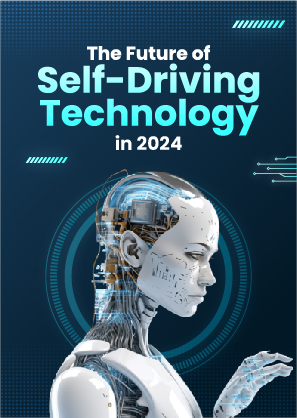or call: +1 (845) 347-8894

or call: +1 (845) 347-8894
or call: +1 (845) 347-8894

In the ever-evolving landscape of technology, self-driving cars have emerged as a focal point, revolutionizing the way we perceive transportation. As we stand on the brink of 2024, the future of self-driving technology promises to redefine our roads, reshape industries, and reimagine the very fabric of our daily lives.
Before delving into the future, it’s crucial to understand where self-driving technology stands today. As of my last knowledge update in 2022, advancements were already pushing boundaries. Companies like Tesla, Waymo, and Uber were actively testing autonomous vehicles, with varying levels of success. However, challenges persisted, including regulatory hurdles, public skepticism, and the need for enhanced safety measures.
Fast forward to 2023, and the self-driving landscape has seen notable progress. Regulatory frameworks in various regions have started to adapt to the emerging technology, paving the way for more extensive testing and eventual deployment. Safety standards have seen improvements, addressing concerns that once cast shadows on the viability of autonomous vehicles.
Collaborations between technology giants and traditional automotive manufacturers have become increasingly common, reflecting a collective acknowledgment of the transformative potential of self-driving technology. In 2023, notable partnerships between tech and auto companies have accelerated the development of advanced sensors, machine learning algorithms, and robust communication systems.
One of the most significant shifts in the self-driving narrative is the rise of autonomous fleets. Ride-sharing services, logistics companies, and even public transportation systems are exploring the integration of self-driving vehicles into their fleets. This shift not only reflects the growing confidence in the technology’s reliability but also signifies a move towards a more sustainable and efficient transportation ecosystem.
Imagine a city where a network of self-driving electric vehicles seamlessly navigates the streets, optimizing routes, reducing traffic congestion, and minimizing carbon footprints. The prospect of autonomous fleets holds the promise of not just individual convenience but a collective reimagining of urban mobility.
Safety remains a paramount concern in the development of self-driving technology. In 2024, advancements in artificial intelligence (AI) have result in more sophisticated systems capable of making split-second decisions with an unprecedented level of accuracy. Improved sensor technologies, including lidar, radar, and cameras, contribute to a comprehensive understanding of the vehicle’s surroundings.
Machine learning algorithms, continuously fed with real-world data, enable vehicles to learn and adapt to diverse driving conditions. The result is a self-driving system that not only adheres to traffic rules but can predict and respond to the unpredictable nature of the road.
Public perception has been a considerable barrier to the widespread acceptance of self-driving technology. The transition towards embracing autonomous vehicles requires not just technological advancements but also concerted efforts in education and awareness. In 2024, initiatives aimed at demystifying self-driving technology are gaining momentum.
Public trials, educational campaigns, and transparent communication about the capabilities and limitations of autonomous vehicles are becoming integral components of the industry’s strategy. As more individuals experience the safety and efficiency of self-driving cars firsthand, skepticism is gradually giving way to acceptance.
The deployment of 5G networks is proving to be a game-changer for self-driving technology. In 2024, the low-latency and high-speed capabilities of 5G will facilitate real-time communication between vehicles, infrastructure, and centralised control systems. This level of connectivity is instrumental in creating a cohesive and responsive autonomous ecosystem.
Imagine a scenario where self-driving cars communicate seamlessly with each other, traffic lights, and pedestrian signals, creating an orchestrated flow of traffic. The integration of 5G not only enhances safety but also opens doors to new possibilities, such as coordinated traffic management, predictive maintenance, and efficient energy utilization.
While the future of self-driving technology appears promising, challenges persist. Cybersecurity threats, ethical considerations in decision-making algorithms, and the need for standardised regulations across borders remain focal points of concern. Addressing these challenges is essential for ensuring the responsible and ethical development of autonomous systems.
As we peer into the future of self-driving technology in 2024, the landscape is both exciting and challenging. The evolution from testing grounds to real-world applications signifies a paradigm shift in transportation. The rise of autonomous fleets, enhanced safety features, and the pivotal role of 5G are converging to create a transportation revolution.
However, the journey towards a fully autonomous future is not without obstacles. Overcoming skepticism, addressing ethical dilemmas, and navigating regulatory frameworks will demand collaborative efforts from industry stakeholders, policymakers, and the public. As we stand at the intersection of technological innovation and societal transformation, the future of self-driving technology beckons us to navigate boldly into a new era of transportation.
